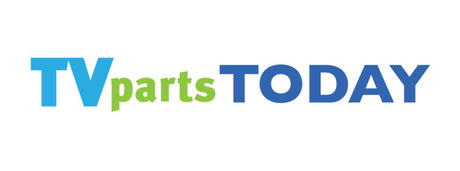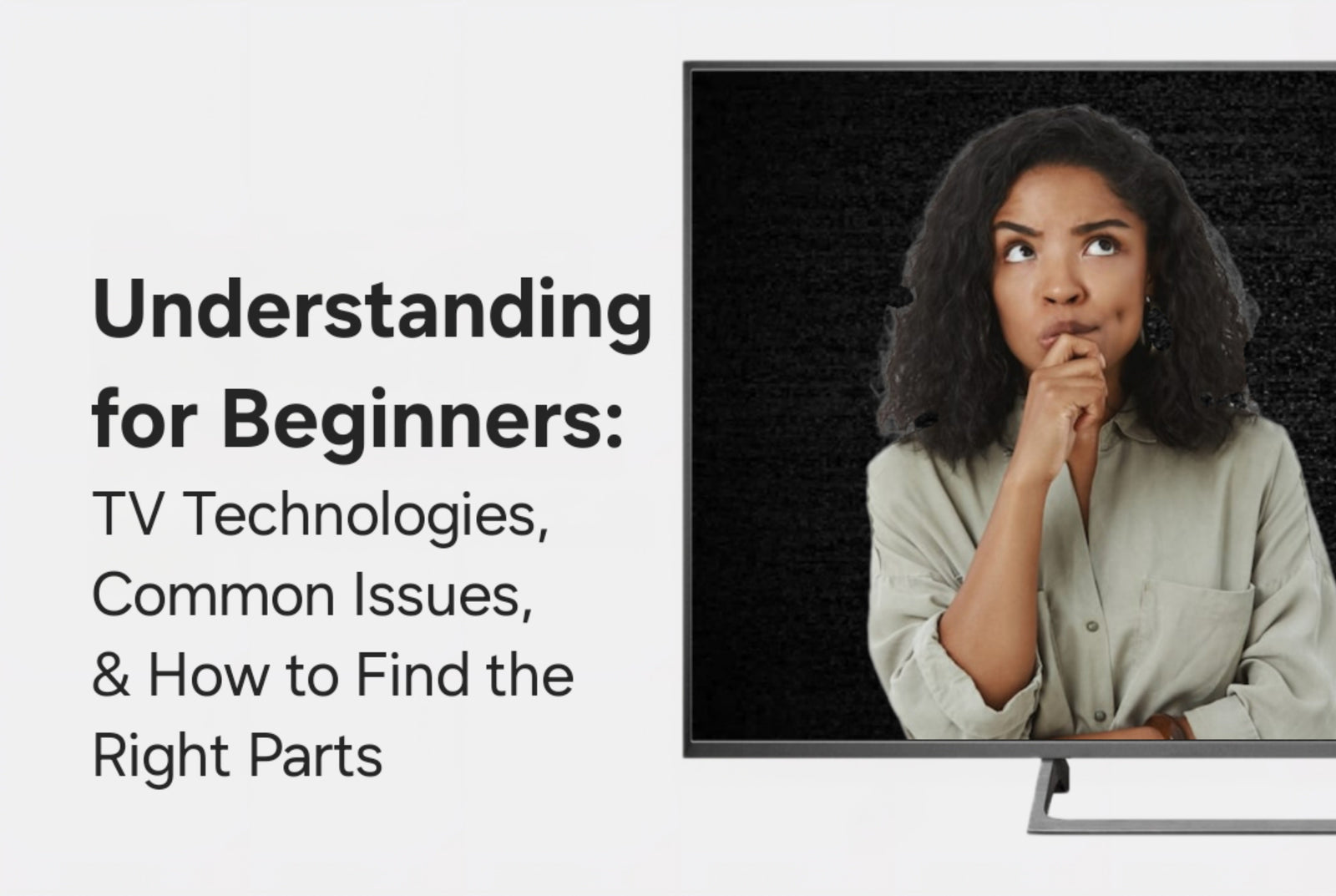Modern televisions are packed with advanced features, stunning resolutions, and sophisticated components, but when something goes wrong, the complexity can make repair feel overwhelming. Whether you are considering a repair for your OLED or QLED set, troubleshooting basic power issues, or simply looking for the correct part number, knowledge is the key to keeping your television in top shape. At TVpartsToday, we are dedicated to making TV repair accessible by helping you understand the differences in technology, how to interpret model numbers, what common issues mean, and where to find the correct replacement parts.
Ready to dive right into a breakdown of common TV repair terminology? Watch our helpful YouTube video below:
OLED vs QLED: What’s the Difference?
When comparing today’s most advanced displays, OLED and QLED technologies stand out. OLED, or Organic Light-Emitting Diode, uses organic compounds that emit light directly when powered, which allows each pixel to switch off entirely. The result is true black levels, excellent contrast, and wide viewing angles. QLED, or Quantum Dot LED, enhances a traditional LED backlight with a quantum dot layer that produces brighter, more vibrant colors. While QLED does not reach the same black levels as OLED, its strength lies in brightness, making it ideal for well-lit environments.
If you plan on repairing either type, remember that parts are not interchangeable. A power supply board or panel for an OLED set will not be compatible with a QLED model. Always confirm the technology and model number before ordering a replacement component.
Deciphering TV Model Numbers
Knowing your TV’s model number is essential when searching for compatible parts or software. Manufacturers include details about size, series, features, and even region in their coding. For instance, in the model number “55UM7300PUA,” the “55” indicates screen size in inches, “UM” represents the series, “7300” designates the model within that series, while “P” and “UA” provide details about the version or market. Always verify the exact coding system on the manufacturer’s website, as conventions can differ between brands and production years. Having the model number ready will simplify the process of identifying compatible parts and support resources.
The Evolution of 4K and 8K Resolutions
As resolutions advance, televisions become more immersive but also more complex. A 4K display offers four times the pixels of Full HD at 3840 x 2160, delivering greater clarity and sharper images. 8K pushes that even further with 7680 x 4320 pixels, though limited content and higher costs make it less common. When repairing high-resolution sets, the added complexity means replacement parts can be harder to source and more expensive. Ensuring compatibility is essential, as small differences in resolution-specific hardware can cause major issues if the wrong component is installed.
Common TV Issues and How to Troubleshoot Them
Power problems are among the most frequent complaints. If your TV will not turn on, check that the cord is firmly connected and test another outlet. Examine the cord for damage and try a simple power reset by unplugging the set, pressing the power button for thirty seconds, and then plugging it back in.
Audio and video sync issues can also frustrate users. Confirm the issue is not from your streaming service or broadcast source, then restart both the TV and connected devices. Updating your TV’s firmware often resolves ongoing problems, and most models include audio delay adjustments in their settings.
Keeping your TV software up to date is another key step in maintaining performance. Manufacturers regularly release patches that improve functionality, fix bugs, and address security issues. Always back up your preferred settings before running updates, as defaults may reset during the process.
Finding the Right Parts for Your TV
The most reliable way to ensure compatibility is by using the exact part number. You can locate this on the component itself or in your user manual. Checking the manufacturer’s website or trusted suppliers such as TVpartsToday ensures you are purchasing the correct match. If in doubt, consult our team for guidance, using the wrong component can lead to further damage or void warranties!
DIY Repair or Professional Service?
DIY repair can be a cost-effective option if you have technical skills and confidence. Simple part swaps, such as replacing a power supply board, can often be done with only a screwdriver. The downside is the risk of making mistakes that cause additional damage. Professional repair, while more expensive, provides the reassurance of certified technicians and warranties. At TVpartsToday, we recommend DIY repair only if you are comfortable with the tools and safety procedures required.
Enhancing and Maintaining Your TV Setup
Repairs are only one part of the ownership experience. Calibrating your TV can optimize picture quality by adjusting brightness, contrast, and color accuracy. Accessories like soundbars, wall mounts, and universal remotes can also improve your viewing environment. Regular cleaning, keeping vents clear, and using surge protection will extend the life of your television and reduce the likelihood of power-related failures.
TVpartsToday Tip: If you are uncertain about the technical aspects of your repair, or your television is still under warranty, consulting a professional may prevent costly mistakes.
Need Help?
If you’re still unsure about the issue or need to replace a part, reach out to TVpartsToday. We can help you identify the exact cause of the problem and provide the right replacement part!
Would you rather watch a video? Check out our helpful Troubleshooting 101 playlist over on YouTube!
Would you rather chat with a seasoned repair expert? Head on over to our TVRepairHelp subReddit!
Need help finding the right board or part?
Call us at 930-212-1975 or browse our inventory online.
DIY-friendly parts, fast shipping, and expert support – only at TVpartsToday.

